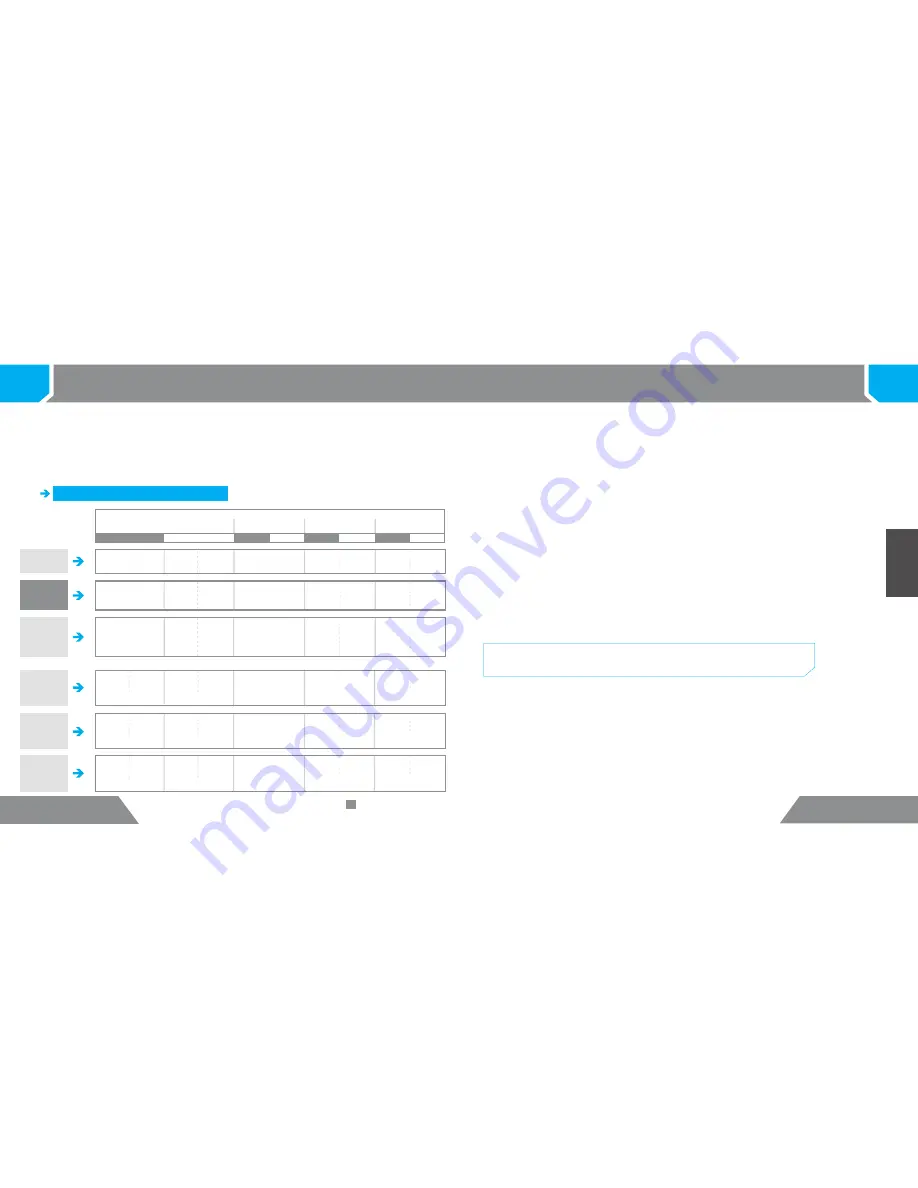
42
43
Piko
Piko
Engli
sh
Battery High/Low
(Battery warning indicator Head Unit):
In Eco Mode, the maximum output is slightly reduced but you gain a longer runtime.
eco
(eco on):
4
4
By default, the Piko operates in the 3-step mode, several other light programs are available.
Light levels:
Programming
Refer to Programming scheme on p. 44/45
Default setting
Note:
The SOS sign is an emergency signal!
Misuse may be prosecuted!
Note:
To determine the ideal indicator program for your application with another
battery or under extreme conditions, experimenting is indispensable. Should the
indicator of the battery high program not work to your satisfaction, switch to low
and test the behavior of the control electronics for some battery life cycles.
Battery
„High“
This is the default for Li-Ion rechargeable batteries. The red LED will light up very early.
Also reserve power will be activated earlier. If used with a NiMH battery, an extension
cord or in very cold temperatures, it might be advisable to change the program.
Battery
„Low“
This program is particularly suitable for older rechargeable batteries.
The red LED and
also reserve power are activated with very little capacity left.
This benefits old batteries
with sufficient capacity but with weaker voltage.
Note:
If the battery low program has been selected, the lamp will flash twice when
connecting it to the battery. This ensures that the setting can always be determined.
This setting enables numerous variations as the lamp will not start at maximum
power as by default, but at the lowest stage.
Exception:
The SOS program and the RVLR program.
Low start
(low start on)
:
These modes include an additional flash mode.
RVLR/SOS/alpine emergency signal
13 W
1.3 W
1200 lm
160 lm
SOS
13 W
1.3 W
1200 lm
160 lm
13 W
1.3 W
1200 lm
160 lm
RVLR
13 W
1.3 W
1200 lm
160 lm
Battery life
Piko 4/X4
Output
10 W
3.1 W
0.4 W
940 lm
620 lm
380 lm
50 lm
10 W
5.5 W
3.1 W
0.4 W
940 lm
380 lm
50 lm
1200 lm
750 lm
470 lm
50 lm
1200 lm
470 lm
50 lm
13 W
7 W
4 W
0.4 W
13 W
4 W
0.4 W
Battery life
Piko 7/X7
Battery life
Piko X Duo
2-step
4-step
3-step
3-step
with RVLR
3-step
with alpine
emergency
signal
3-step
with SOS
2 h
5:45 h
58 h
4 h
12 h
116 h
2:40 h
7 h
70 h
2 h
3:15 h
5:45 h
58 h
4 h
6 h
12 h
116 h
2:40 h
4 h
7 h
70 h
2:30 h
4:20 h
7:30 h
58 h
4:45 h
8 h
15 h
116 h
3 h
5 h
9 h
70 h
2:30 h
7:30 h
58 h
4:45 h
15 h
116h
3 h
9 h
70 h
940 lm
140 lm
10 W
1 W
2 h
18 h
4 h
36 h
2:40 h
21 h
2:30 h
22 h
4:45 h
47 h
3 h
28 h
940 lm
140 lm
940 lm
140 lm
940 lm
140 lm
10 W
1 W
10 W
1 W
10 W
1 W
2 h
18 h
4 h
36 h
2:40 h
21 h
2:30 h
22 h
4:45 h
47 h
3 h
28 h
2 h
18 h
4 h
36 h
2:40 h
21 h
2:30 h
22 h
4:45 h
47 h
3 h
28 h
2 h
18 h
4 h
36 h
2:40 h
21 h
2:30 h
22 h
4:45 h
47 h
3 h
28 h
eco off
eco off
eco off
eco off
eco on
eco on
eco on
eco on
RVLR
SOS
RVLR
SOS
RVLR
SOS
RVLR
SOS
alpine emergency
alpine emergency
alpine emergency
alpine emergency
alpine emergency
They are very easy to select by simply keeping the button depressed until the button's red
LED (blue LED) flashes once, twice, etc. When taking your finger off the button accordingly,
the setting will be saved.
The battery warning indicator may also be altered. By default, the
battery high
program is selec-
ted. The control electronics monitors the capacity of the rechargeable battery by measuring the
voltage.
As battery voltage and capacity are not proportional, no generally applicable informa-
tion can be provided as regards the remaining battery life from the point when the red LED is
illuminated.
This also applies to how much time is left when the red LED starts flashing.
The default settings are suited best for each battery for a long time.
Refer to Programming scheme on
p. 44/45




















